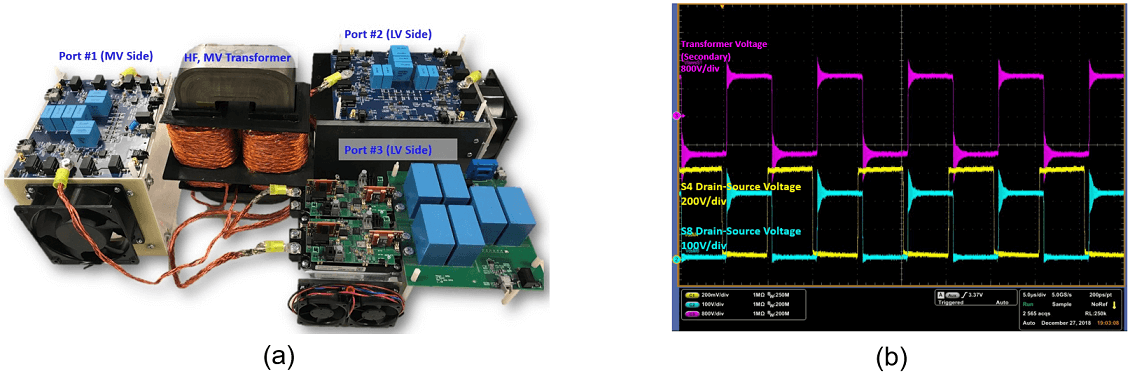LIBRARY
Medium Voltage Dual Active Bridge Using 3.3 kV SiC MOSFETs for EV Charging Application

In this work, a different power delivery solution with an iso- lated dual-active bridge (DAB) converter is proposed for a medium- voltage connected EV charging architecture, as shown in Fig. 1. A matrix-type, modular system architecture is used to connect multiple cells in series in order to interface the medium-voltage grid. Each cell consists of a triple-active bridge, allowing multiple ports for a single charging station for more EV charging capability. This struc- ture can eliminate the line frequency service transformers, which are bulky and costly, and thus, reducing the size and installation costs of EV charging stations. Fig. 2 shows a picture of the triple-active bridge prototype with 2.5 kV input and dual 800 V outputs via high- frequency, medium-voltage transformer.























































































